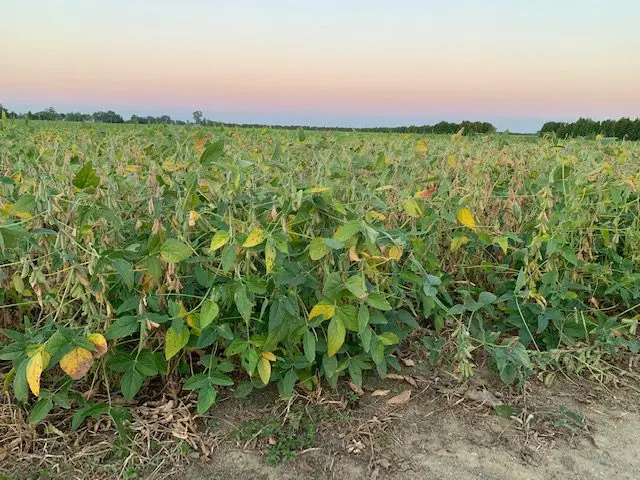 As August ends and September begins, we are seeing the first signs of fall in our region of Michigan, in the eastern U.S. Midwest. I started a new school year, teaching adult high school classes for non-traditional students. The soybeans are just starting to yellow a bit. And the corn is starting to dry out at the base of the stalk.
As August ends and September begins, we are seeing the first signs of fall in our region of Michigan, in the eastern U.S. Midwest. I started a new school year, teaching adult high school classes for non-traditional students. The soybeans are just starting to yellow a bit. And the corn is starting to dry out at the base of the stalk.
Despite timely rains much of the season, August was relatively dry. Some rain came with heavy winds that damaged trees, but that wind thankfully didn’t damage our crops. We got about 1.3 cm. or .5 inch, at the end of August, which the crops really needed. We expect that rain to help yields.
We are also starting to see signs of late-season diseases. We are at the point in the season where it is very hard to make decisions about treating to protect yield. We do our best to estimate yield potential. Then we estimate the potential damage the late-season diseases could do as the plants start shutting down in the fall. We debate if treatment will protect enough yield potential to pay for a fungicide and application. This year, we decided not to treat. We won’t know if that was the best decision until harvest, which should start about the beginning of October.
 Yellowing soybeans and drying corn stalks are the first indication that the crops will soon stop growing. As the plants slowly stop functioning, we will wait for moisture to dry enough for the crops to store well.
Yellowing soybeans and drying corn stalks are the first indication that the crops will soon stop growing. As the plants slowly stop functioning, we will wait for moisture to dry enough for the crops to store well.
But while we wait, we are also preparing for harvest. Our implement dealer came to carefully check the combine for potential problems. We want it to run well during harvest, without breaking down. This preventative maintenance helps. We are also deciding what key parts we need to have on hand to quickly take care of common in-field breakdowns. We’re concerned about lingering supply chain issues, and we have heard that equipment parts can be hard to find. Pre-harvest preparation should make that season go more smoothly.
At the same time, we are looking ahead to next year. We’ve bought some fertilizer for the 2022 season, since farm input prices seem to be increasing constantly. And we’ve met with a few of our landlords to share what we have been doing on their land and talk about rental agreements. We pay cash rent for all the fields we rent, and we need to keep communication open with those landowners so we all can plan for next year.
Of course, our sustainability and conversation practices are a big part of our planning. In late August, a film crew from a foundation that helps fund our local watershed visited our farm to learn about those practices. We were able to share how they make a difference in our fields.
 Right now, we are fairly optimistic about this year’s crops. And, we are looking forward to harvest.
Right now, we are fairly optimistic about this year’s crops. And, we are looking forward to harvest.
This field update is funded by the soybean checkoff. To share or republish part or all of this Ground Work 2021 article, please link to the original article and credit www.USSOY.org.

